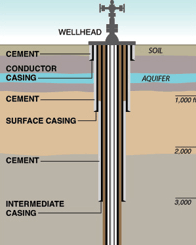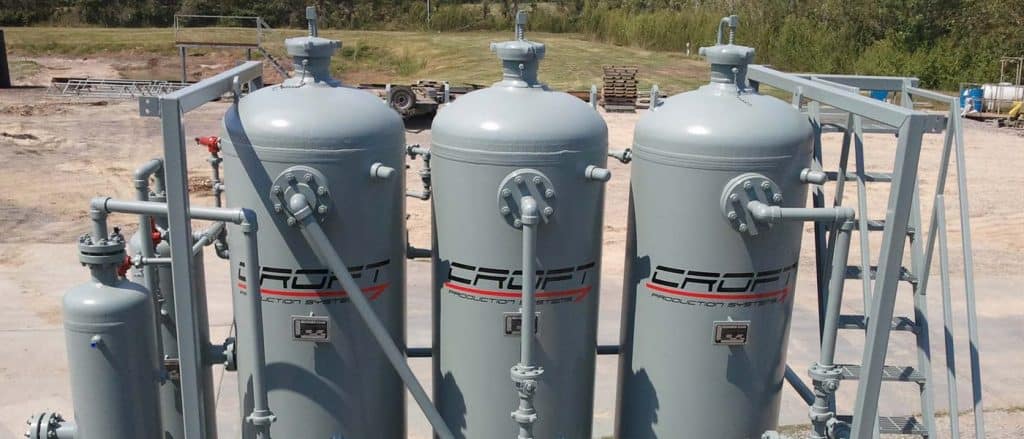You hear about the oil and gas industry everywhere. Even more so in Houston, TX. Heck…just in Texas in general! With the industry buzzing all around us, it is hard to know what information is true, what information is false, and what information is exaggerated. So I have compiled some common myths that I know I personally have heard more than a couple times.

Myth #1: Fracking contaminates underground aquifers and water supply.
- If you look at the picture to the right, you will see multiple layers of cement in between the downhole well and the aquifer. This is to protect the fresh water and avoid contamination. Fracking, specifically, is done far far deeper than the aquifers are. The injection of liquid that is done for fracking is done 7,000 to 15,000 feet underground . Guess how far below the surface aquifers usually are? 300 feet… that’s a pretty big difference! Check out one of my previous blogs that goes more in depth about what fracking is and how it is done. There is actually a cool info-graphic in there that shows how much further down the fracking is done in comparison to where the aquifer is.
Myth #2: Fracking causes Earthquakes.
- I wont say too much about this one because my fellow blogger, Amy, has already done a great job on explaining this one. Come to find out…fracking is not to blame on the causes of earthquakes. It is actually water injection. Don’t know the difference between the two? Well neither do a lot of people! Click on the link to read more on this in Amy’s blog.
Myth #3: If we export oil, we will run out.
- This one was actually thought to be true at one point. It was thought that the U.S. production would decline and we would have to rely on international oil. However now, that is not the case. For a couple reasons. First, there has been advances in technology such as fracking and horizontal drilling, that allows us to retrieve oil in areas we couldn’t before. New reserves have also been found which has lead to the increase of production in recent years. The United States has actually grown to be the world’s largest producer of oil and natural gas. Amy, has gone into the export ban further and discusses the advantages that would come along with it if the ban was lifted.
Myth #4: One day, we are just going to run out of oil and gas without warning. And then what?
- OK, this one is tricky. So I am sure you are thinking…well ya! Of course it will eventually run out. Doesn’t everything?! I can agree with you. However, Bob Dudley with BP put the answer to this question perfectly… “To put the resource issue into perspective, society has so far consumed the equivalent of around two trillion barrels of oil and gas and we estimate that there are still more than 40 trillion barrels’ worth in the world’s reservoirs. Sheikh Yamani famously observed, the Stone Age did not end because we ran out of stones and it will be the same with fossil fuels.” He does a great job of putting this question into perspective. So yes, at some point we cannot of an indefinite amount of supply. But by that point, will it even be an issue?
Myth #5: Desiccant dehydrators are only efficient for small volumes of gas.
- Of course, I had to tie Croft in here somewhere! This one is one we actually hear very frequently. So many people think that desiccant dehydrators are built and run off of smaller volumes of gas. Whereas Triethylene Glycol units are for larger volumes. This is not necessarily true. Croft’s Passive Dehydration System has run efficiently off volumes as low as 100 cubic feet to as high as 75 MMcfd. If you check out the picture below, this site is running at 15 MMcfd. Of course, there are other variables that come into play on how much volume each unit can handle. Such as temperature, pressure, and dew point. However, I would say that there are a lot of volumes!

There you have it…5 common myths, busted! If you have any other myths in the oil & gas industry that you have heard, feel free to share!












